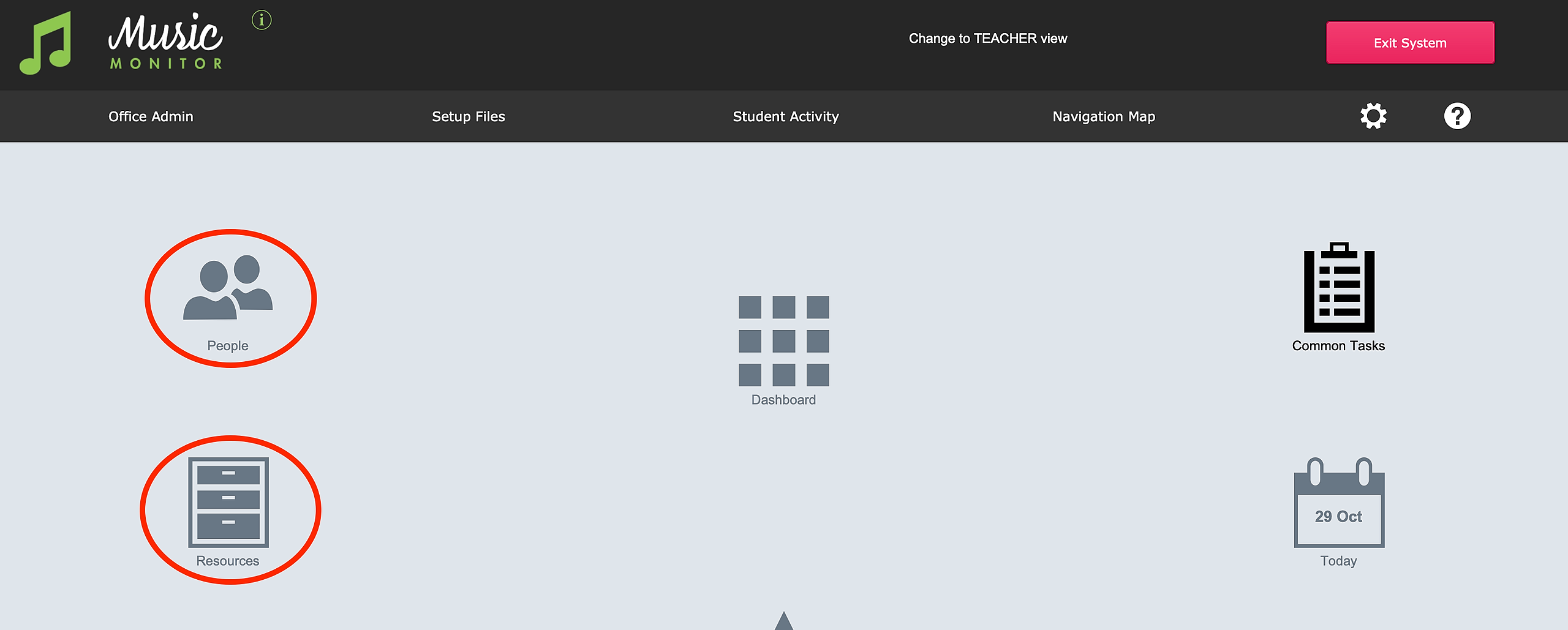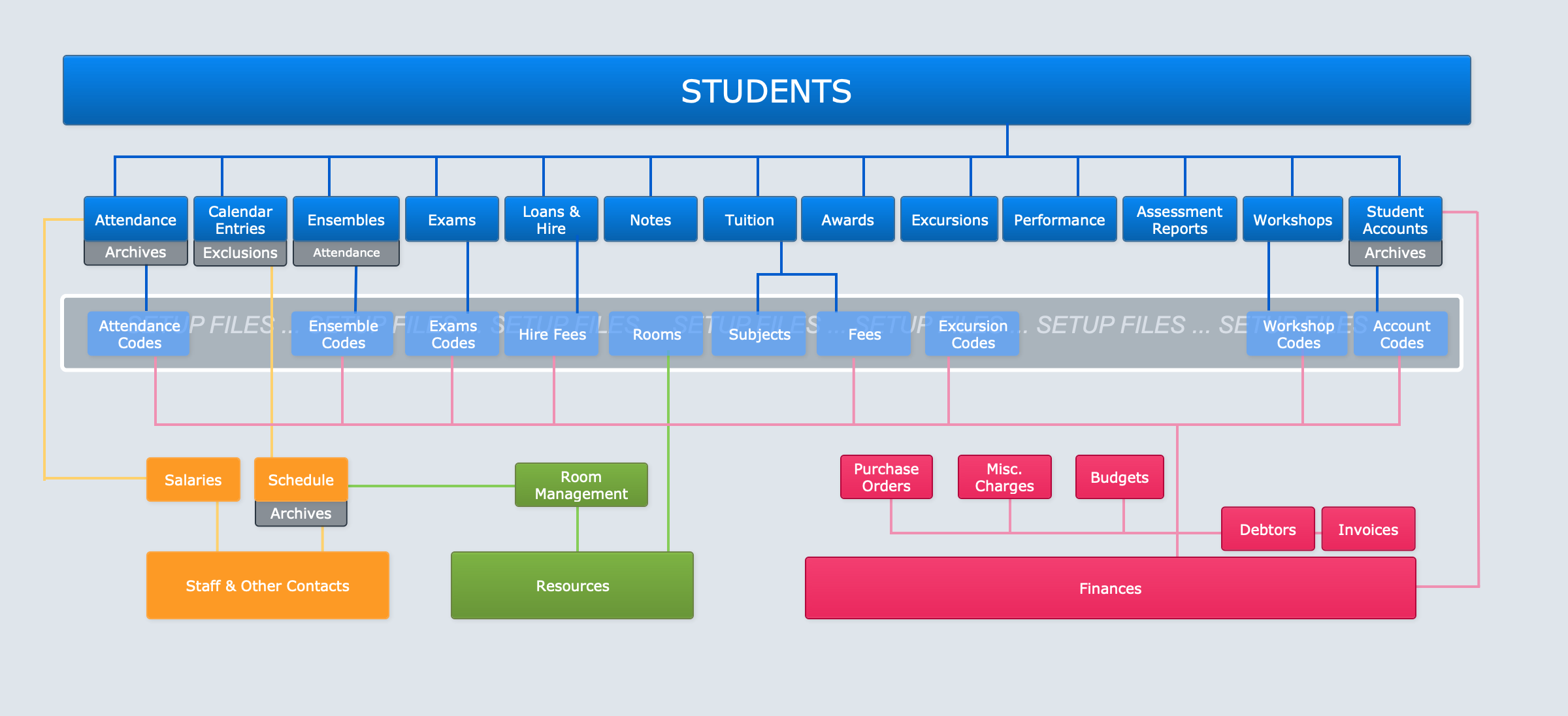Background
Like any database, Music Monitor exists to help you manage and keep track of the relationships between things.
The things at the core of the database are the people and objects that actually, tangibly exist in the world:
- Students and the family contact network behind them.
- Staff and other organisational contacts
- Rooms and other locations
- Instruments and other resources
These are found in the People and Resources links from the Home Screen.
The second set of things are the activities that bring these people and objects together. Music Monitor can handle an impressive array of activities:
- Tuition - typically one-to-one lessons in voice or an instrument
- Ensembles / Classes - groups of all sizes
- Exams - Music Monitor streamlines participation in AMEB and other exams
- Loans & Hire - of instruments or other resources
- Awards
- Excursions
- Performances
- Workshops
These are found under Student Activity on the Home Screen.
And finally, there are the records that are generated as part of the management of all these activities:
- Calendar Entries
- Attendance Records
- Accounts and Billing
- Salaries
These are all connected as shown in the Navigation Map, which is also linked from the Home Screen.
Which opens this view.
How It Works
People and Objects
First of all, your database needs the real things set up. If you have a school database with the students already entered, we can build an integration to bring those student details in regularly and keep your Music Monitor file up to date. If you're moving over from another system, we can import a list one time to get you set up. You will similarly need to enter or import staff details as well as rooms and other resources.
Activities
Next, you need to set up the activities for your students to enrol in. For the Tuition enrolments, you set up Subjects. For Loans & Hire, the record is linked directly to the resource being hired. For the other activities, you're setting up an item named as you would expect - an Ensemble for Ensembles, an Exam for Exams, etc.
Once you have set up the activities for the students to participate in, you begin creating records in the enrolments files - one file for Tuition enrolments, one for Ensemble enrolments, etc.
Other Files
You then prompt the system to take the data in those enrolment records and generate calendar entries, attendance records, billing line items, and so on.
In Music Monitor, enrolments are put in place with a starting date, and remain current until an end date is entered and that date passes. If your business process is to terminate all enrolments at the end of a year or other period, and re-enrol, that is easily achieved.
Ready to Dive In
The links below take you to articles or help categories that will be a good next step in exploring this system.
The Basics
- For a look at navigation and general use of the system, go next to Music Monitor Basics.
- There are more helpful introductory articles in the Navigation & General help category.
Initial Setup
- See this article on how to Install Music Monitor.
- There are other articles on getting the setup right in the Technical & Setup help category.
The Students File
- For an overview of this core part of the system, we recommend the article on Tabs in the Students File.
- You can also browse the whole Students help category.
Accounts
- For an overview of accounts and finances, see Accounts Overview.
- You can also browse the whole Student Accounts help category.
Salaries
- Music Monitor can calculate salaries for your staff. See the article on how to Set Up Salaries.
- You can also browse the whole Salaries help category.
Introduction for Teachers
- If you're a teacher using Music Monitor to mark attendance and view your students' records, you may like to start with the Teachers Basic Overview.
- There are several other helpful articles in the articles tagged Teacher Guide.
Tips & Tricks
- Music Monitor gives you the power of FileMaker's Find function. See Search and Find.
- For further tips, including some more advanced usage, see the Tips and Tricks tag list.




